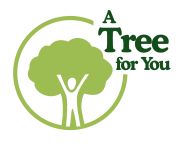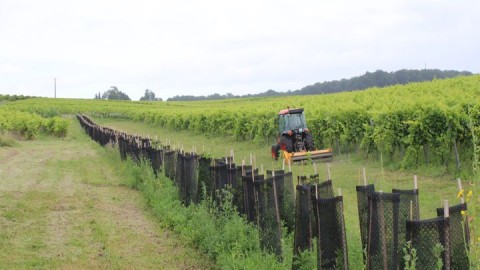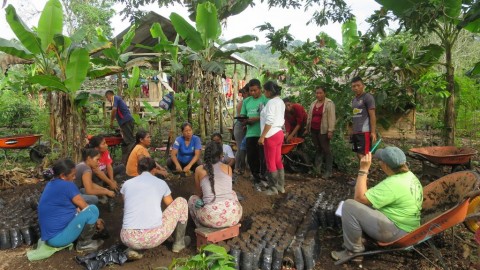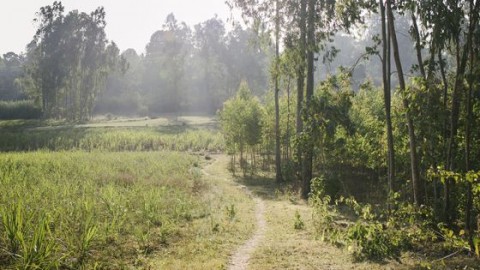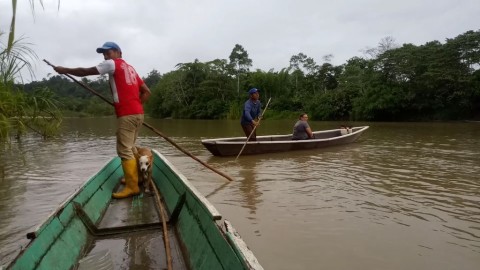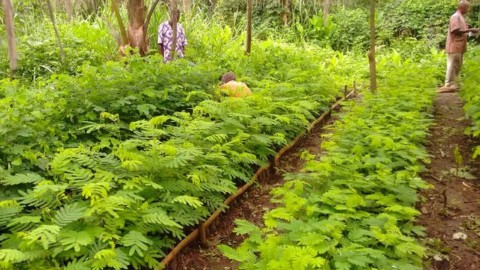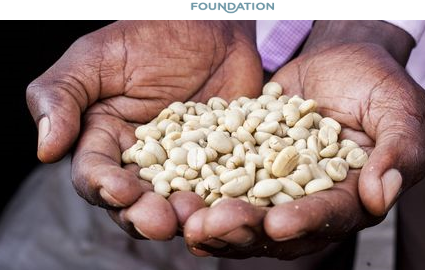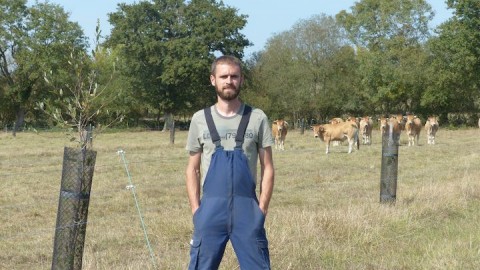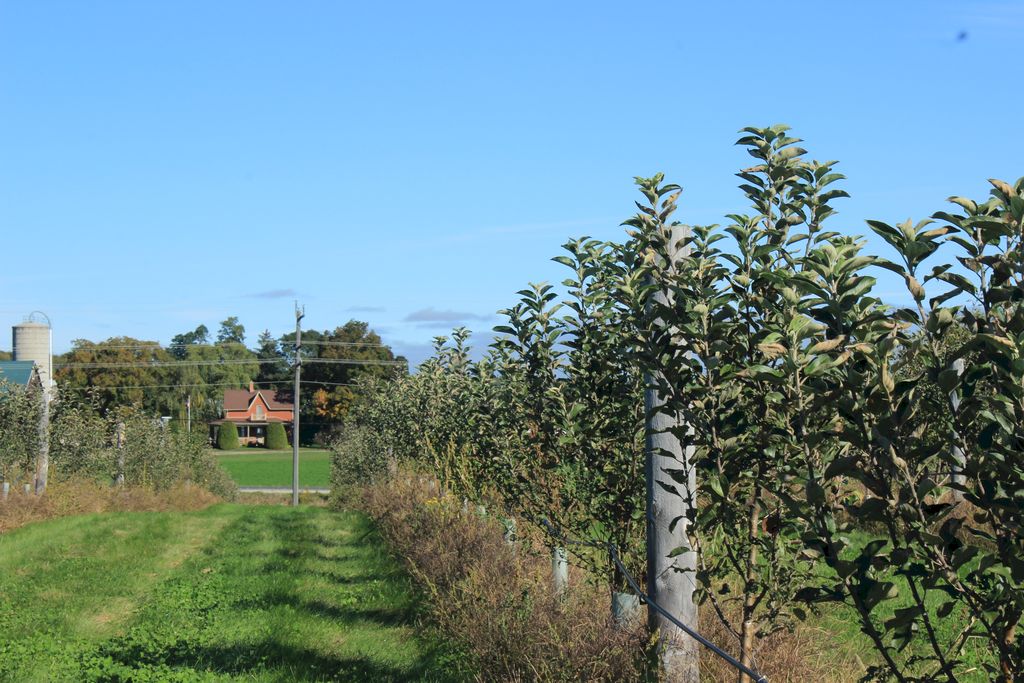
Background & challenges
Over the past century, forest cover in southern Ontario has declined to such an extent it is now only 25% of its original level. This is insufficient for ensuring the health of local wildlife and ecosystems. Agriculture has been a driver for deforestation, with producers cutting down trees to switch the land to arable production, resulting in soil degradation, water quality problems, and loss of biodiversity at farm level.
Tree planting in this project aims to restore ecological corridors for local species. It also seeks to improve soil quality by adding organic matter, limit erosion and reduce nutrient leaching in the watersheds. In addition, the trees will store carbon.
The farms involved in the project all have objectives specific to their context.
The species chosen are adapted to the local area and selected to suit their planting site, e.g., water-tolerant trees with dense root systems for planting on riverbanks and restoring riverside areas. Tree species of differing heights at maturity, are planted together to form effective windbreaks to support underground ecosystems, reduce soil erosion, enable nutrient cycling, and protect adjacent crops from strong winds and snow. Apart from establishing riparian buffers and windbreaks, trees in large areas are planted in order to restore forest cover. Tree species are grown from locally harvested and regionally adapted seeds. In addition, most of the tree species selected are pioneer species that can withstand the cold Canadian winters.
This project builds on a first plantation plan of 10,000 trees in Ontario in 2020/2021. By planting 3,500 trees in 2021/2022 it will be possible to tackle various environmental issues, namely:
- developing biocorridors to provide habitat for migratory and local fauna;
- creating a windbreak effect through the planting of trees to protect cultivated plots;
- restoring forest cover to improve soil conservation and create wildlife habitats;
- protect soils from erosion and improve water quality in the surrounding rivers.
Project type

Forestry and agroforestry
Beneficiaries

Farming families
Number of trees

4 550 trees planted to retain 3 500
Species planted

Eastern white pine (Pinus strobus), white spruce (Picea glauca), red pine (Pinus resinosa), Norway spruce (Picea abies), eastern white cedar (Thuja occidentalis ), red oak (Quercus rubra), tamarack (Larix laricina), silver maple (Acer saccharinum), Sugar Maple (Sapindaceae), European larch (Larix decidua), bur oak (Quercus macrocarpa), American Sycamore (Platanus occidentalis), Bitternut Hickory (Carya cordiformis), Black Walnut (Juglans nigra), Swamp White Oak(Quercus bicolor)
Partner

PUR Projet
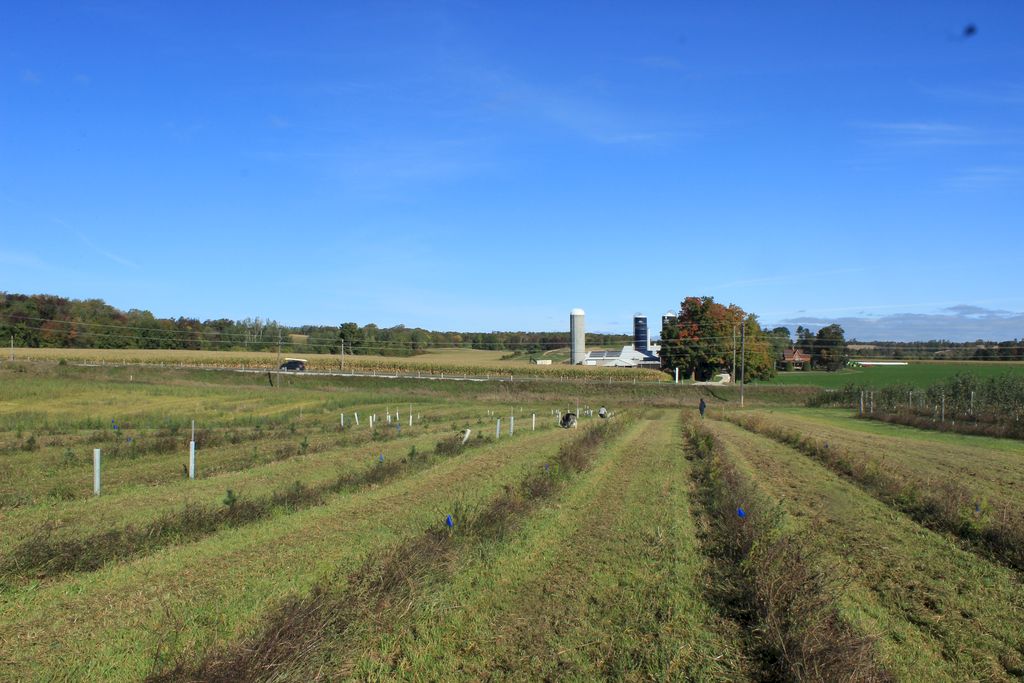
Works timeline
Already completed: seed collection from local trees and growing seedlings in a local nursery.
September – October 2021: selecting local planting partners.
January – March 2022: training tree planters in relevant planting techniques.
April – September 2022:
- when the temperature is 3 to 4 C° for 10 days in a row, gathering tree seedlings from the nursery ;
- transporting seedlings to the farms;
- land preparation, adjusting seeders.
May – October 2022: planting.
2022 to 2026: monitoring, maintenance and evaluation.
Planting partner
Budget
The total budget to be collected is €29,750. The price for planting a lasting tree is €8,50
- 95% allocated to the planting project, broken down as follows:
- seedling cost: €0,93
- site preparation: €1,14
- planting and supervision: €0,69
- project coordination and management: €0,52
- program management: €0,13
- administration and overhead: €0,83
- buffer Planting 2021/2022: €1,27
- buffer Planting 2020/2021: €1,27
- change risk: €0,025
- collection, follow-up and communication costs for A Tree For You (15%): €1,275
- and 5% (€0.425) to support the structural costs of A Tree for You.
